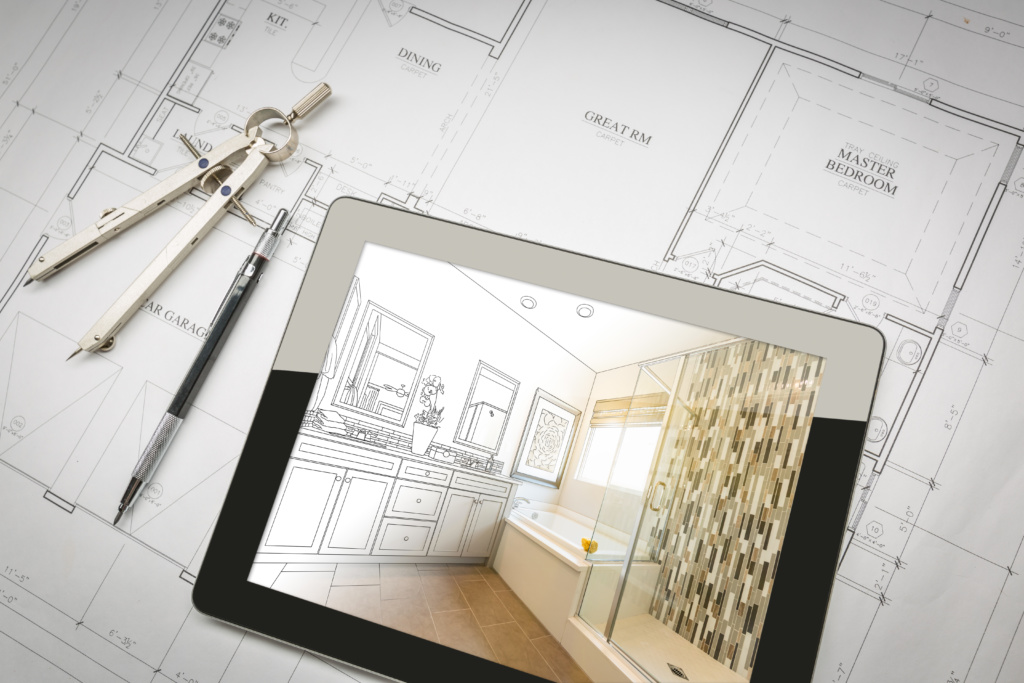Top 10 Most Expensive Home Improvement Mistakes
By Tom Kraeutler, The Money Pit
The home improvement industry is bracing for one of the busiest years ever. With interest rates stable and home values up, the urge to improve is expected to be at an all-time high. But while home improvement will be hot this year, the risk of making a costly mistake at any point in those projects is also great. From poor planning to dealing with the inevitable “surprise” problems that appear once the walls have been torn open, home improvements rarely go exactly as planned.
As any spin around the cable channels or YouTube search will prove, home improvement advice has never been more plentiful. But for all the inspiration these programs provide, there is an ugly side to home improvements; without careful planning, the cost of home improvement can easily skyrocket. For nearly 20 years, we’ve heard every failure from listeners to our national home improvement radio show. But the big errors come up over and over again.
Here are our picks for the top 10 most common and costly home improvement mistakes that can be easily avoided.
- Over Improving. Serial renovators beware, while many projects contribute real value to your property, others have about same resale value as a used lottery ticket. If the value of your current home plus the cost of the improvement you’ve planned far exceeds the average home value in your area, you will be unlikely to get a significant return on your home improvement investment. Bathrooms, kitchen and decks usually provide the best return on investment. Projects geared more toward personal taste like decorating, for example, usually won’t significantly improve your value, so only do those if you expect to live in the home long enough to enjoy them.
- Planning Makes Perfect. Before hiring a remodeling contractor, do your homework. Research products and read reviews with a mind toward developing a “spec” or specification for your project that identifies the products you’d like included in your remodel. For small projects, you can do this yourself, but for larger jobs, hire an architect or designer. These pros can develop a clear set of plans that assures all home improvement professionals your considering bid on the same job including, for example the exact roofing shingles or plumbing faucets you picked out. Plus, their expert supervision can help make sure the job comes out exactly as you have planned.
- Cost Check. One of the most frustrating areas of the home improvements is to understand your potential costs before jumping in. But if you know where to look, getting an idea of costs for the most common projects – kitchens, bathrooms, windows and roof replacements is easy. At Home Advisor.com, for example, you’ll find a True Cost Guide for almost all your home improvement projects. The estimates are based on real home projects and constantly updated to reflect the most current data which can be very helpful when budgeting for improvements.
- Zoned Out. While building a new shed or fence might seem like an easy-enough home improvement project, it can quickly turn into a legal nightmare if you don’t first check the local land zoning codes for your property. Contractors won’t always warn you to check the zoning law before starting your project. Doing so never means they’ll get more work, or less if the deck can’t be built or the shed added without requiring a costly variance. That’s why it is so important that you take this step yourself to avoid home improvement mistakes. Even if your project gets completed without a visit from the local zoning official, a violation could haunt you years later when it comes time to sell your home.
- Know Your Limitations. Picking up a hammer or paint brush is well within the skill set of most home improvers, but bigger tools might best be left to the pros to avoid unpredictable results. I once had a caller to our national show who was close to getting in way over his head, in more ways than one. He wanted to ask us which saw he needed to cut out a ‘plumbing’ pipe in this basement to make room for a pool table. A few questions later, we determined that the pipe he wanted to cut out wasn’t for plumbing at all – it was the structural steel column holding up his house and cutting it would have sent the home crashing down on his head!
 Hire with Care. Once your plans are set, the next challenge is to hire a home improvement contractor. While word-of-mouth referrals can be helpful for finding contractors, let technology do the legwork for you to find professionals who are not only qualified, but also available and interested in your job. At Home Advisor.com contractors are background checks before becoming eligible for referrals to customers, and users can read reviews from past customers to learn what their experience had been.
Hire with Care. Once your plans are set, the next challenge is to hire a home improvement contractor. While word-of-mouth referrals can be helpful for finding contractors, let technology do the legwork for you to find professionals who are not only qualified, but also available and interested in your job. At Home Advisor.com contractors are background checks before becoming eligible for referrals to customers, and users can read reviews from past customers to learn what their experience had been.- Contract Review. Once you’ve chosen a contractor, make sure all of your agreements are in writing. Good contracts include a clear statement of the scope of work, list of materials and equipment to be provided, total contract price and a schedule of payments, job start and completion dates, a statement describing the quality of work to be performed, description of written warrantees for all work, appliances and equipment, a dispute resolution clause and a lien clause stating the owner’s rights under the law as well as lien release requirements. For small projects, get in the habit of writing a quick email back to the contractor who gave you a price for a project to “confirm” the details, including price and schedule. These steps can help avoid confusion for both the contractor and the pro, and form the basis for a better experience for all.
- No Permit. In many areas of the country, getting a building permit is a requirement before starting a home improvement project. But while one might think this is an area that the contractor is responsible for, this isn’t always so. Many times, contractors will attempt to make getting the permit a responsibility of the home owner. This is a costly mistake. Make the contractor responsible for getting the permit and complying with building codes every step of the way. The local building inspector is your best resource for making sure you get the job done properly.
- Check Insurance. Before your start your project, call your local insurance agent to check your homeowner’s policy limits. Since policies are often purchased based on existing house value, you may need to up your limits before starting. Besides property insurance, it’s also important you make sure anyone working on your property also carries Workman’s Compensation insurance to cover any injuries they may sustain while in your home.
- Make Dinner Plans. Remember the major remodeling projects can be chaotic. Good contractors will work with you to minimize the inconvenience but the projects will still disrupt your family life. Keep the lines of communication open between yourself and your contractor what to expect as the project evolves. If improvements include the kitchen or bath, make a back up plans to keep life as normal as possible until your project is complete.
Home improvement can be one of the most rewarding times of home ownership. With proper planning, use of the latest technology and a dash of patience, you can avoid common home improvement mistakes and transform your abode from house to home to castle!
Copyright 2018 All Rights Reserved. Reprinted with permission from Squeaky Door Productions, Inc. t/a Money Pit Media. For more money saving home improvement ideas and tips, visit moneypit.com, and while you’re there, sign up for Tom & Leslie’s free weekly eNewsletter

